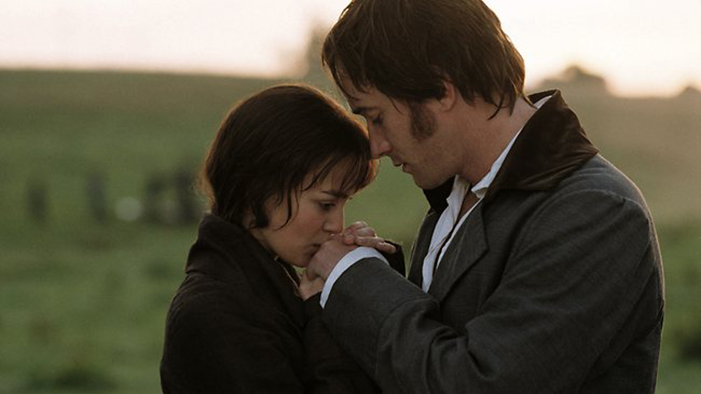Ancien Régime
French for “old rule,” the feudal-based political, and administrative, and social system under Louis XIV and his Bourbon predecessors that was wiped out by the French Revolution.
August Decrees
A series of decrees issued by the National Assembly in August 1789 that successfully suppressed the Great Fear by releasing all peasants from feudal contracts.
Bastille
A large armory and state prison in the center of Paris that a mob of sans-culottes sacked on July 14, 1789, giving the masses arms for insurrection. The storming of the Bastille had little practical consequence, but it was an enormous symbolic act against the ancien régime, inspired the revolutionaries, and is still celebrated today as the French holiday Bastille Day.
Bourgeoisie
The middle and upper classes of French society who, as members of the Third Estate, wanted an end to the principle of privilege that governed French society in the late 1700s. The bourgeoisie represented the moderate voices during the French Revolution and were represented by delegates in both the Estates-General and the National Assembly.
Civil Constitution of the Clergy
A document, issued by the National Assembly in July 1790, that broke ties with the Catholic Church and established a national church system in France with a process for the election of regional bishops. The document angered the pope and church officials and turned many French Catholics against the revolutionaries.
Committee of Public Safety
A body, chaired by Maximilien Robespierre, to which the National Convention gave dictatorial powers in April 1793 in an attempt to deal with France’s wars abroad and economic problems at home. Although the committee led off its tenure with an impressive war effort and economy-salvaging initiatives, things took a turn for the worse when Robespierre began his violent Reign Of Terror in late 1793.
Constitution of 1791
The new French constitution that in 1791 established a Constitutional Monarchy, or limited monarchy, with all executive power answerable to a legislative assembly. Under the new constitution, King Louis XVI could only temporarily veto legislation passed by the assembly. The constitution restricted voting in the assembly to the upper and middle classes of French society and abolished “nobility” as a legal order.
Declaration of Pillnitz
An August 27, 1791, warning from Prussia and Austria announcing that they would intervene militarily in France if any harm came to King Louis XVI, who had just been captured trying to escape with his family from Paris. The declaration prompted then–Legislative Assembly leader Jacques-Pierre Brissot to declare war on Austria and Prussia.
Declaration of the Rights of Man and of the Citizen
A document, issued by the National Assembly on August 26, 1789, that granted sovereignty to all French people. The declaration, which drew from the ideas of some of the Enlightenment’s greatest thinkers, asserted that liberty is a “natural” and “imprescriptible” right of man and that “men are born and remain free and equal in rights.”
Directory
The new executive branch established by the constitution written during the moderate Thermidorian Reaction of 1794–1795. The Directory was appointed by the legislative assembly. However, after 1797 election results proved unfavorable to elements in the Directory, it orchestrated an overthrow of the assembly and maintained dubious control over France until it was overthrown by Napoleon Bonaparte in 1799.
Estates-General
A medieval representative institution in France that had not met for 175 years before King Louis XVI reconvened it on May 5, 1789, to deal with the looming financial crisis. Consisting of three Estates—the Clergy, Nobility, and Commoners, respectively—the Estates-General was the only group that would be able to force the assorted French Parlements into accepting the controller general of finance Charles De Calonne’s tax decrees.
Girondins
The name given to the moderates in the National Convention. The Girondins controlled the legislative assembly until 1793, when, with the war going poorly and food shortages hurting French peasants, the Jacobins ousted them from power.
Great Fear
A period in July and August 1789 during which rural peasants revolted against their feudal landlords and wreaked havoc in the French countryside.
Jacobins
The radical wing of representatives in the National Convention, named for their secret meeting place in the Jacobin Club, in an abandoned Paris monastery. Led by Maximilien Robespierre, the Jacobins called for democratic solutions to France’s problems and spoke for the urban poor and French peasantry. The Jacobins took control of the convention, and France itself, from 1793 to 1794. As Robespierre became increasingly concerned with counterrevolutionary threats, he instituted a brutal period of public executions known as the Reign Of Terror.
Limited Monarchy
Also known as Constitutional Monarchy, a system of government in which a king or queen reigns as head of state but with power that is limited by real power lying in a Legislature and an independent Court System.
Monarchy
The form of government, common to most European countries at the time of the French Revolution, in which one king or queen, from a designated royal Dynasty, holds control over policy and has the final say on all such matters. In France, the Bourbon family held the monarchy, with Louis XVI as king at the time of the Revolution.
National Assembly
The name given to the Third Estate after it separated from the Estates-General in 1789. As a body, the National Assembly claimed to legitimately represent the French population. The assembly dissolved in 1791 so that new elections could take place under the new constitution.
National Convention
The body that replaced the Legislative Assembly following a successful election in 1792. As one of its first actions, the convention declared the French monarchy abolished on September 21, 1792, and on the following day declared France a Republic. Though originally dominated by moderates, the convention became controlled by radical Jacobins in 1793.
Parlements
A set of 13 provincial judicial boards—one based in Paris and the other twelve in major provincial cities—that constituted the independent Judiciary of France. The parlements held the power of recording royal decrees, meaning that if a parlement refused to record an edict, the edict would never be implemented in that district.
Reign of Terror
A 10-month period of oppression and execution from late 1793 to mid-1794, organized by Maximilien Robespierre and the Committee of Public Safety to suppress any potential enemies of the radical Revolution. The Reign of Terror ended with the fall of Robespierre, who was arrested and executed in July 1794. Robespierre’s execution ushered in the Thermidorian Reaction of 1794–1795 and the establishment of the Directory as the head of France’s executive government.
Sans-culottes
Urban workers and peasants, whose name—literally, “without culottes,” the knee-breeches that the privileged wore—signified their wish to distinguish themselves from the high classes. The mob mentality of the sans-culottes constituted the most radical element of the Revolution.
Tennis Court Oath
A June 20, 1789, oath sworn by members of the Third Estate who had just formed the National Assembly and were locked out of the meeting of the Estates-General. Meeting at a nearby tennis court, these members of the Third Estate pledged to remain together until they had drafted and passed a new constitution.
Thermidorian Reaction
The post–Reign of Terror period ushered in by the execution of Maximilien Robespierre in July 1794 and the reassertion of moderate power over the French Revolution. The Thermidorian Reaction brought the Revolution’s focus back to the first stage of moderate changes designed to benefit the business classes of French society.
Third Estate
One of the three Estates in the Estates-General, consisting of the commoners of France, whether rich merchants or poor peasants. Despite the fact that it constituted the vast majority of the French population, the Third Estate had just one vote in the Estates-General—the same vote that the much smaller First Estate (clergy) and Second Estate (nobility) each had. Frustrated with its political impotence, the Third Estate broke from the Estates-General on June 17, 1789, and declared itself the National Assembly.
Tuileries
The palace in Paris in which King Louis XVI and his family were placed under house arrest after they were forcibly taken from their court at Versailles. The point of removing the royal family to Paris was to allow the people to keep a close watch on their actions.
Versailles
The royal palace built by King Louis XIV a few miles outside of Paris. Known for its extraordinary splendor, extravagance, and immense size, Versailles was the home of the king, queen, and all members of the royal family, along with high government officials and select nobles. On October 5, 1789, a mob of angry and hungry French women marched on Versailles, bringing the royal family back to Paris to deal with the food shortage.


 payment page
payment page



